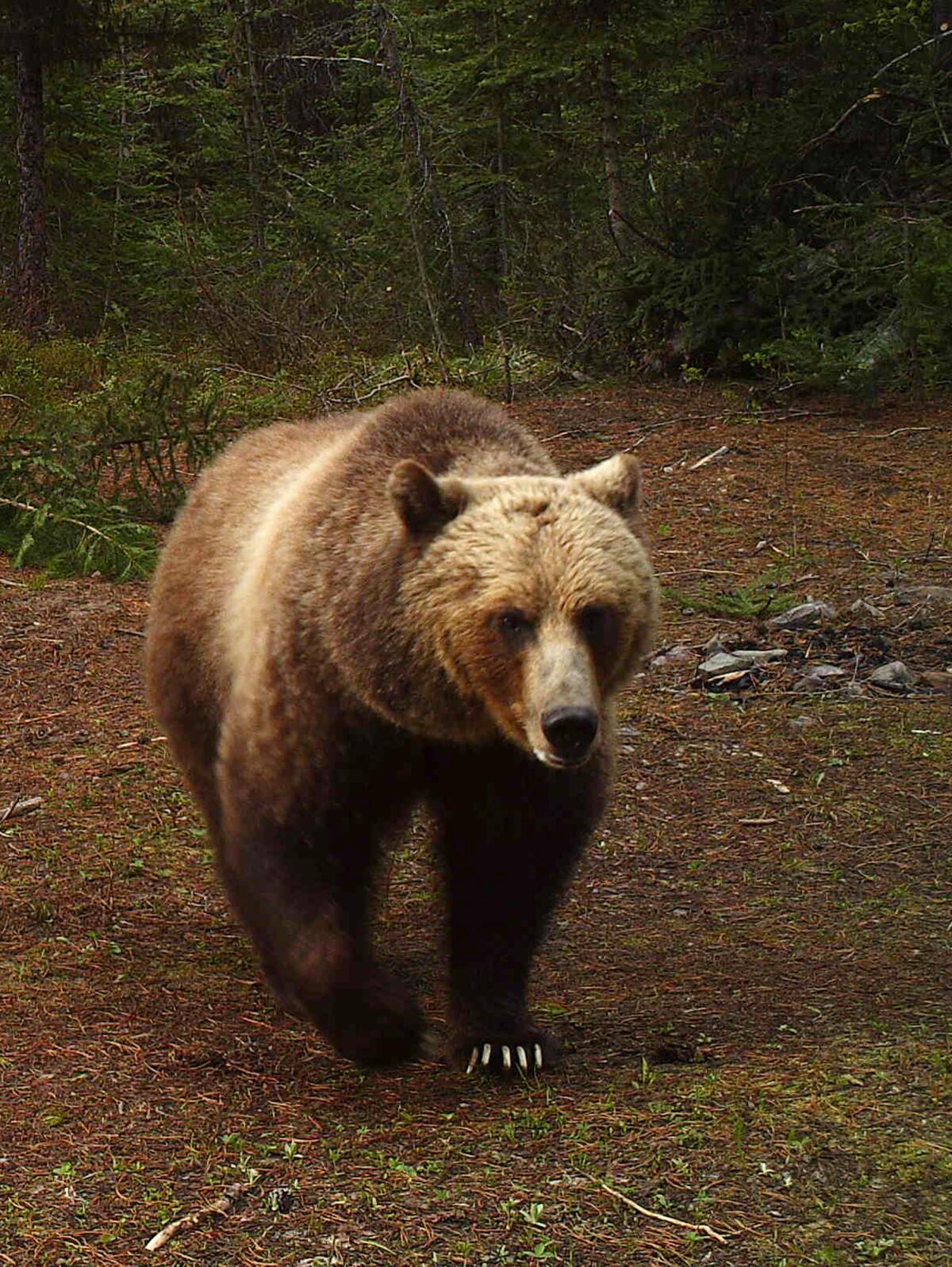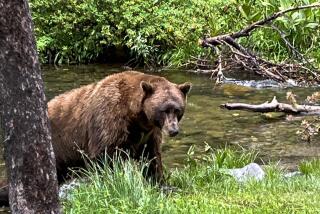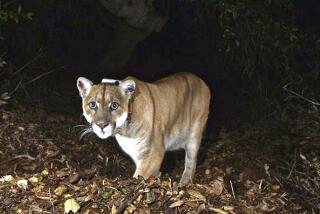Montana officials shot and killed a grizzly. Its DNA linked it to a human death

- Share via
On July 24, a grizzly bear in West Yellowstone killed a 48-year-old teacher on a hiking trail. Authorities attempted to capture the bear but were unable to find it.
More than a month later, on Sept. 2, a bear and its cub broke into a home, taking some dog food.
Later that day, Montana Department of Fish, Wildlife and Parks officials captured the cub and fatally shot its mother “due to an immediate public safety threat from the bear’s food-conditioned behavior,” the department said.
The mother was 10 years old and had been captured previously, in 2017, for “research purposes.”
Genetic tests and a physical examination tied her to a series of incidents involving humans, including the teacher’s death in July.
A grizzly bear killed a woman over the weekend outside West Yellowstone, Mont., forcing the closure of a national forest while trackers searched for the animal.
After the fatality, authorities made “multiple efforts to trap and remove the bear” from an area that abutted homes, campgrounds and trails, including a search by an aircraft. None were successful.
The bear had been involved in at least one other incident with a human, in 2020 at Henrys Lake State Park in Idaho. That incident resulted in a person being injured and, like the fatal incident this year, was attributed to “defensive responses by the bear.”
Her cub, a 46-pound male, was being held in Helena at a Fish, Wildlife and Parks Department wildlife rehabilitation center until it could be transferred to a zoo.
Grizzly bears are an endangered species in America’s 48 contiguous states. By 1975, their population was only 700 to 800, according to the U.S. Fish and Wildlife Service. It is now estimated to be almost 2,000.
More to Read
Sign up for Essential California
The most important California stories and recommendations in your inbox every morning.
You may occasionally receive promotional content from the Los Angeles Times.












